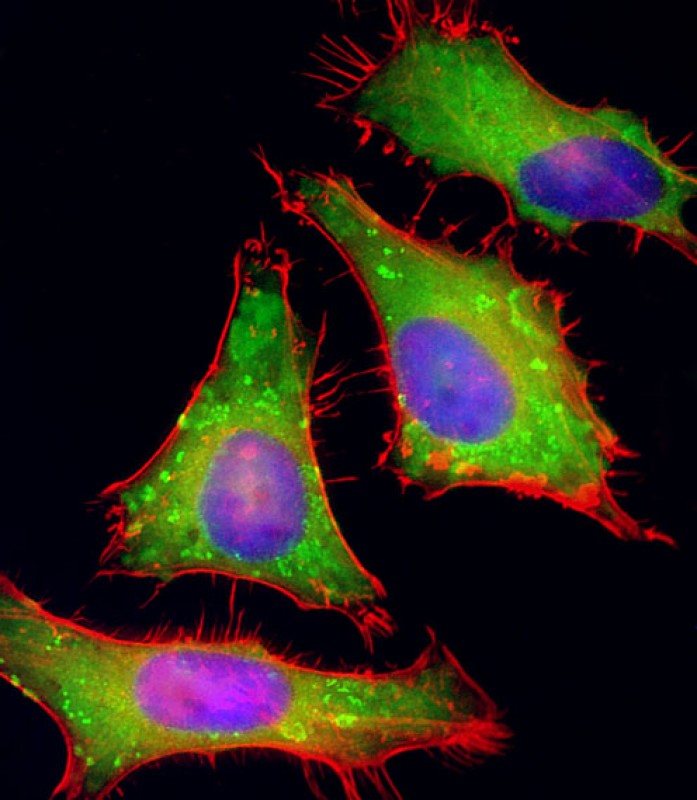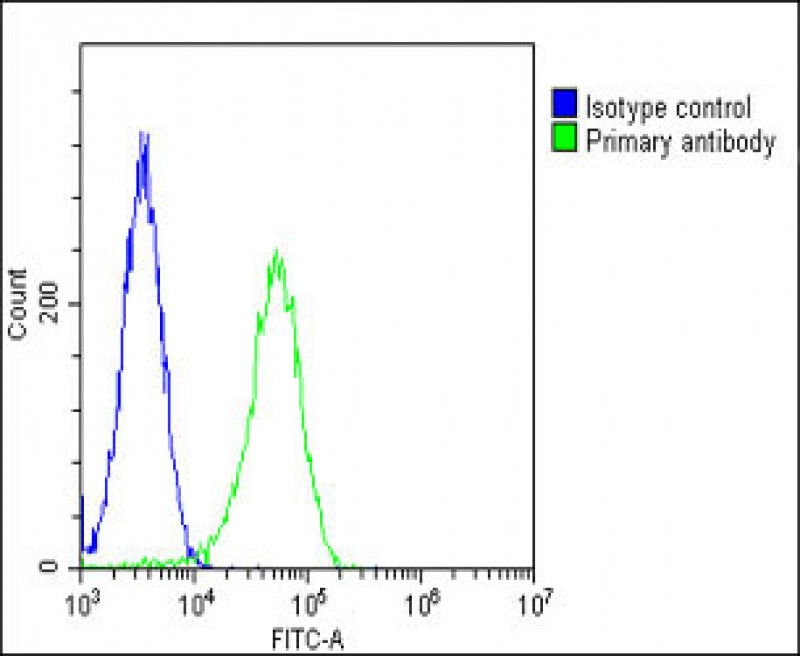


| WB | 1/2000 | Human,Mouse,Rat |
| IF | 咨询技术 | Human,Mouse,Rat |
| IHC | 咨询技术 | Human,Mouse,Rat |
| ICC | 1/25 | Human,Mouse,Rat |
| FCM | 1/25 | Human,Mouse,Rat |
| Elisa | 咨询技术 | Human,Mouse,Rat |
| Aliases | GPI inositol-deacylase, 3.1.-.-, Post-GPI attachment to proteins factor 1, hPGAP1, PGAP1 |
| Entrez GeneID | 80055 |
| WB Predicted band size | 105.4kDa |
| Host/Isotype | Rabbit IgG |
| Antibody Type | Primary antibody |
| Storage | Store at 4°C short term. Aliquot and store at -20°C long term. Avoid freeze/thaw cycles. |
| Species Reactivity | Human, Mouse, Rat |
| Immunogen | This PGAP1 antibody is generated from a rabbit immunized with a KLH conjugated synthetic peptide between 90-122 amino acids from human PGAP1. |
+ +
以下是关于PGAP1 (N-Term)抗体的3篇参考文献及其摘要概括:
1. **文献名称**:*PGAP1 is essential for GPI-anchor processing and protein sorting to the plasma membrane*
**作者**:Tanaka S, Maeda Y, Tashima Y, Kinoshita T
**摘要**:该研究揭示了PGAP1在糖基磷脂酰肌醇(GPI)锚定蛋白加工中的关键作用,发现其通过去除GPI锚定中的未饱和脂肪酸链促进蛋白运输至细胞膜。研究中使用的N端抗体通过Western blot和免疫荧光验证了PGAP1在细胞内的定位及其功能缺失导致的ER滞留表型。
2. **文献名称**:*A novel GPI-specific phospholipase A2 regulates neurodevelopment via remodeling membrane protein dynamics*
**作者**:Fujita M, Umemura M, Yoko-o T, Jigami Y
**摘要**:此文献通过PGAP1 (N-Term)抗体发现其在神经元发育中通过调节GPI锚定蛋白的膜分布影响突触形成。抗体被用于免疫沉淀和共聚焦显微镜实验,证明PGAP1缺失导致海马神经元轴突导向异常。
3. **文献名称**:*PGAP1 mutations cause autosomal recessive encephalopathy with cerebellar atrophy*
**作者**:Howard MF, Murakami Y, Pagnamenta AT, et al.
**摘要**:临床研究利用N端特异性PGAP1抗体进行患者成纤维细胞分析,发现突变导致GPI锚定蛋白加工缺陷,引发内质网应激和细胞凋亡,解释了小脑萎缩与智力障碍的分子机制。抗体检测显示突变体中PGAP1蛋白表达显著降低。
**备注**:若需具体实验方案或抗体生产信息,建议补充检索抗体公司(如Abcam、Proteintech)的技术文档或引用相关商品化抗体的应用文献。
The PGAP1 (N-Term) antibody is a tool used to detect the N-terminal region of the protein PGAP1 (Post-GPI Attachment to Proteins 1), which plays a critical role in the processing and maturation of glycosylphosphatidylinositol (GPI)-anchored proteins. GPI anchors are lipid modifications that tether proteins to cell membranes, and their proper attachment is essential for protein localization and function. PGAP1. an endoplasmic reticulum (ER)-resident enzyme, catalyzes the cleavage of the GPI anchor’s lipid moiety during protein remodeling, a step required for efficient transport of GPI-anchored proteins from the ER to the Golgi apparatus.
Research on PGAP1 has implications for understanding cellular trafficking mechanisms, membrane protein dynamics, and diseases linked to GPI anchor deficiencies, such as certain forms of intellectual disability and metabolic disorders. The PGAP1 (N-Term) antibody is commonly used in techniques like Western blotting, immunofluorescence, or immunoprecipitation to study PGAP1 expression, subcellular localization, and interactions. By targeting the N-terminal region, this antibody helps distinguish full-length PGAP1 from potential cleavage products or isoforms. Validation of specificity, including knockdown controls or peptide blocking assays, is critical to ensure accurate detection in experimental models. Its application contributes to elucidating PGAP1’s role in cellular physiology and pathology.
×